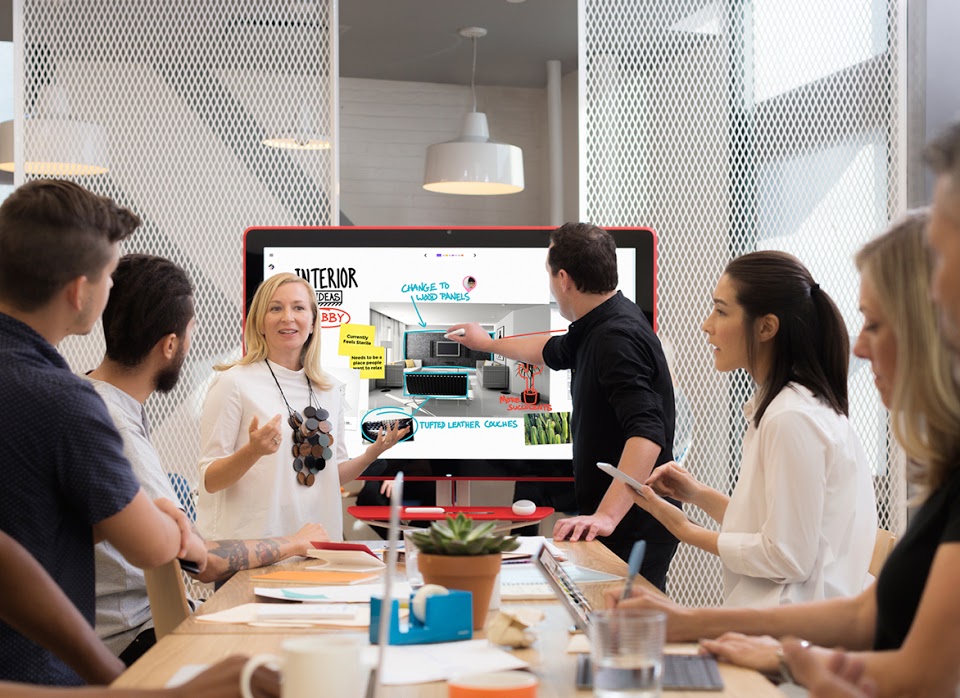Is your company struggling with the fact that you don’t have enough meeting rooms? Your meeting rooms are too big and they don’t facilitate working together with people that are not onsite? You’re not alone. We hear about these meeting issues a lot and tackle them together with our clients. In this post, I will give you some actionable advice you can use to improve the meeting experience for your employees significantly.
You can turn your meetings into highly collaborative and productive events, as they are meant to be. I will show you how you can use Google technology to do all of this, while taking a big step towards transforming your company into a future-proof digital workplace. But first, let us take a closer look at the issues a lot of companies run into when it comes to meetings.
At one of our clients, we have done a study where we analysed the usage of meeting rooms. These were our findings:
- Connecting with remote people caused an average delay of 7 minutes to start the meeting, because it was hard to get the conference call or video conference going.
- If there was a brainstorming session, all parties were always onsite.
- Although meeting rooms were booked, a lot of them were left empty.
- The amount of participants in the meeting was always far less than the meeting room capacity.
The analysis was very time consuming and only based on a couple of days of data. This is because the data collection is a manual process, done by people walking around in the building. But the results are interesting and allow to take targeted actions to improve the meeting experience.
How Google is helping you to connect with remote people
The workforce is getting more and more dispersed and working from home has become very common. Therefore it is very important that you can easily connect to a meeting from anywhere, on any device.

It’s great to connect from your smartphone or laptop, but sitting around one laptop with multiple people in a meeting is just not a nice experience. To have an optimal digital workplace, you definitely need to have a video conferencing solution to connect your meeting rooms and people in an efficient way.
Hangouts Meet Hardware Kit
That’s why Google has introduced the Hangouts Meet Hardware kit a couple of years ago. The goal of this kit is to connect remote people in a matter of seconds, giving you the possibility to focus on the meeting instead of getting the meeting started. The Hangouts Meet Hardware kit was always praised to be a one-click video conferencing solution. With the arrival of voice assistants like the Google Home, this has now evolved to be even zero touch. You can now start your meeting by giving voice commands to your Hangouts Meet Hardware Kit! Pretty cool stuff, enabling you to start the meeting even faster.

Brainstorming Sessions
Next to that, Google also introduced the Jamboard a year ago. It’s a collaborative whiteboard facilitating brainstorming sessions from a distance. Starting today, you can enjoy the full experience of brainstorming via your smartphone and tablet in order to do brainstorming sessions with people connecting remotely.
Optimise the usage of your meeting rooms
Google always thinks 10x, and that’s exactly what they are doing with rooms as well.
Let’s start with optimising the usage of your meeting rooms. Our analysis has shown that a lot of the booked meeting rooms are left empty, which blocks others for having a meeting at that time. That’s why Google has made a 10x effort to release empty meeting rooms. They are doing this in two different ways:
- Proactively
Whenever all the participants decline the meeting invite, the meeting room will automatically be released. This gives others the opportunity to book the room. - Reactively
Whenever there is a Hangouts Meet Hardware kit in the meeting room, it will detect whether there are people in the room. This is possible through the Artificial Intelligence technology built in the camera and the microphone. Whenever the camera doesn’t detect any movement and the microphone doesn’t pick up any sound, the room will be released. Again, freeing up space for others to hold their meeting. Pretty cool stuff if you ask me.
Reimagine meeting rooms
The way meeting rooms are being used has changed a lot throughout the years. Most facility managers tell us they think the meetings have less participants. But they have no clue how the meeting rooms are actually being used. Next to that, office space has become very expensive and that’s why it’s important to utilise your office space as efficient as possible.
Google is now giving facility managers what they have been dreaming of. You can track the amount of meetings held in each meeting room per hour, the amount of participants per meeting room, the booking rates by room capacity, least and most used rooms, and much more.
This data gives the facility manager everything he or she needs to rethink the amount of meeting rooms needed, and the size of those meeting rooms. We haven’t had the chance to play around with the data, but here’s our guess of the meeting room distribution within large corporates:
| Meeting room size (seats) | Amount needed |
| > 2 | 10% |
| 2-4 | 30% |
| 5-10 | 40% |
| 11-20 | 15% |
| 16+ | 5% |
Looking ahead
Demographics change, the business changes, the way we meet will probably also change again in the future. That’s why it’s recommended to go for modular meeting rooms. It will allow you to adapt faster when the data is changing again!
We can certainly conclude that by combining this efficient meeting room management with an easy and flawless meeting experience, you’ll see the productivity of your employees rise. No doubt it will bring better results for your business, while making it future-proof at the same time.
What about you?
Want to get started with optimising your meeting experience, but you don’t know where to begin? Want help with your meeting room management? Looking for a Google partner that can help you with your meeting videoconferencing needs?


